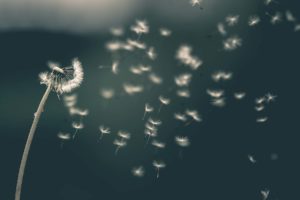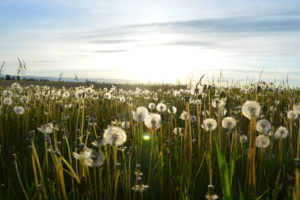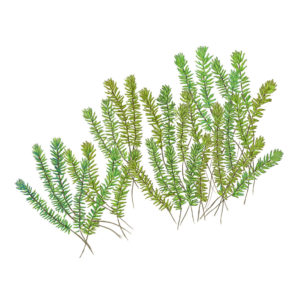There’s not a whole lot blooming in mid-January, when native Californian plants shut down for the winter. But if you head over to the San Francisco Botanical Garden, you’re in for a treat.
The magnolia trees begin to blossom, unveiling voluptuous pink and white flowers that blanket the paths in fairyland fashion. Magnolias are not native to Northern California, but it turns out that these immigrants have been persuaded to believe they are in the midst of the Central American cloud forest, or in a sheltered valley in the Himalayas where they call home.
“When these are in full bloom, this pathway is solid pink petals,” said botanical garden curator Don Mahoney on a recent tour of the magnolia collection.
From mid-January until the end of March, more than 100 magnolias of various varieties bloom in the garden, a collection of rare varieties unrivaled outside of China. Magnolias are prolific in the Southeast, where they were once heralded as a kind of mascot of the Confederacy. But that’s just the native U.S. variety, Magnolia grandiflora. In the rest of the world, the ancient flowering trees have become increasingly rare and endangered as development encroaches on the last wild populations, which makes the conservation work at the San Francisco Botanical Garden at Strybing Arboretum especially critical.

The winter bloom is the best time of year to enjoy the garden’s unique magnolia collection, which dates back to 1939. Among the standouts is a 90-foot Magnolia campbellii ‘Strybing White’ cultivar (probably the largest in the world and named after the garden itself), the critically endangered Magnolia zenii with 3-inch white flowers that blush purple, the Magnolia dawsoniana, whose 10-inch bloom looks like flags fluttering in the wind, and the Magnolia denudata with its exquisite lily shaped blossoms with pure white petals.
For the San Francisco Botanical Garden, the conservation work happens at a very local scale, even as it has international intent. After the blossoms fall, staff collect the seed and propagate it in the nursery and then plant the seedlings back in the garden, or send them out to other botanical gardens that are collaborating on magnolia conservation.
The goal is to provide a reserve so that one day, the magnolia species can be returned to their native lands. San Francisco turns out to be a suitable place for many of these species in exile.
“We try to specialize in stuff that no other botanical garden is specializing in, mostly due to our climate that’s so unusual,” said Mahoney. “Because we’re so cold in the summer and relatively warm in the winter.”
Magnolias native to high elevation cloud forests in Central and South America seem to work well in San Francisco, so Mahoney said he’s trying to focus efforts on growing those varieties. Associate curator David Kruse-Pickler has traveled to Costa Rica, Indonesia and Ecuador to scout out magnolia seeds, and other plants for the garden. Currently, of the 84 different magnolias the botanical garden grows, 11 species are listed as endangered.
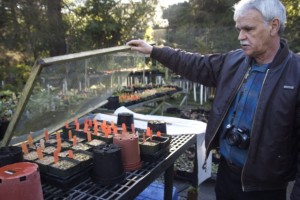
Considering all the trouble we have with invasive species, it might seem risky to unleash newcomers into the Bay Area’s already fragile ecosystems. But Mahoney and Kruse-Pickler insist that magnolias are unlikely to cause trouble. As tropical species, they need more water than the climate here provides, so gardeners have to supplement.
“We have to sustain them. They would never make it on their own,” said Kruse-Pickler.
The magnolia family, Magnoliaceae, is considered one of the earliest flowering plant families and dates to 100 million years ago, before the time of bees. In the wild, the flowers are pollinated by beetles. In the botanical garden, it’s probably honeybees that accidentally do the pollination, and the squirrels chow down on most of the seed. Hawks use the trees for perching.
Each tree has its own unique story of how it came to be in the garden.
The ‘Strybing White’ cultivar came from a batch of seed from India in 1934 that was supposed to turn into the pink Magnolia campbellii. Instead, two decades later (magnolias are late bloomers) it surprised everyone when it flowered white with little drooping tepals(the name for petals in species without a differentiated outer flower), apparently the result of a cross-pollination with another magnolia variety. The cultivar became highly prized and was considered in Europe to be the classiest of cultivated magnolias. That tree is still alive and well in the garden.
The Dianne Feinstein tree, a Magnolia amoena, was one of the last of its kind in the wild, a gift to the California senator from the Shanghai Botanical Garden.
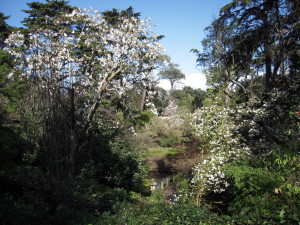
“It’s a tiny, itty-bitty little flower, but it’s just exquisite,” said Mahoney. “It’s a very modest sized tree, but it can get covered by these little flowers that are brilliant, deep purple and white and they look like little bells hanging from the tree.”
Kruse-Pickler is headed to China in March during magnolia flowering season on a scouting expedition, paid for with private donations. Next year he’ll go back to collect the seed and bring them back to the garden.
“I’m going first to see them, and actually see the wild origin,” he said. “So it’s going to be a very great trip. I’m really excited.”
With any luck, one day we’ll see them bloom.
Beginning January 12, the San Francisco Botanical Garden, Strybing Arboretum will have a series of docent-led tours and classes celebrating the magnolia bloom. Information is available here.
[slideshow]
Alison Hawkes is the online editor for Bay Nature.


